How data is disrupting the art world - and can your car play a part?
Big Data is the buzziest of words. For some, it’s the dawn of a new era, ushing in new technologies and possibilities. For others, it’s about wealth and power – a ‘new oil’ to be harvested and sold. But is there more to Big Data than meets the eye? A select group of people are beginning to uncover a certain beauty and creativity hidden within the endless stream of ones and zeros. And guess what: your EV has a part to play, too.
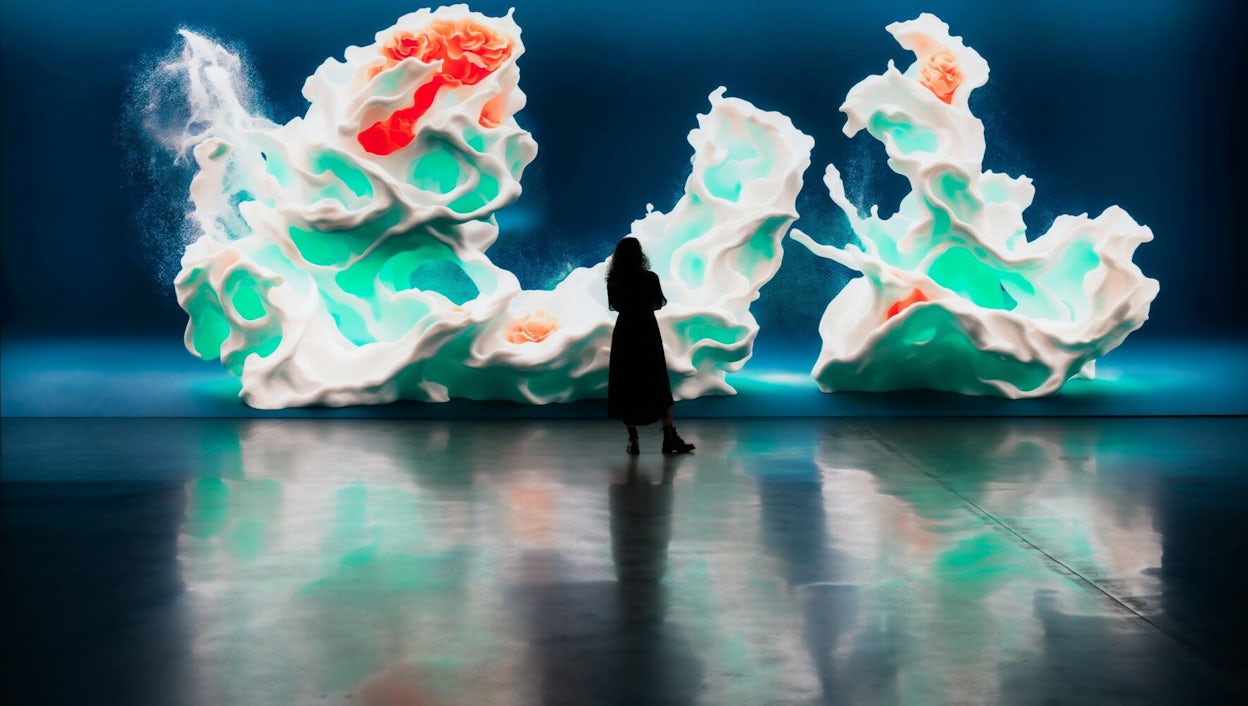
I want the artwork to help demystify AI. I want to do something fresh that shakes our perspective.
One moment, we’re plunging to the ocean floor, swimming with vibrant marine life; the next, we’re deep in the Amazon rainforest. These are not just artworks – they are living, breathing digital sculptures, constantly morphing in colour, form, texture and sound. There is even a scent, co-created with Italian brand Bulgari, to evoke the raw essence of the rainforest.
Welcome to the wondrous world of Refik Anadol, the artist at the forefront of redefining the relationship between artificial intelligence and the visual arts. His latest artwork, “Echoes of the Earth: Living Archives” – first unveiled at the Serpentine in London in February and set to be showcased at Futura Seoul during the Frieze Seoul art fair in September – delves into the untapped potential of co-creating with machines to challenge and transform our human perspective on nature and the environment. Anadol explains, “I want the artwork to help demystify AI. I want to do something fresh that shakes our perspective.”
Anadol works with meticulously crafted data sets. At the core of his creations is a vast, open-source AI model that his Los Angeles studio – comprising environmental scientists, marine biologists, medical doctors, philosophers, and computational designers – have been developing ethically in collaboration with Smithsonian Institution in the US and Natural History Museum in the UK. Anadol also personally gathered data from the Brazilian rainforest, where he and his wife, fellow artist Efsun Erkilic, spent three months living and learning from the indigenous Yawanawá people.
These projects are far from vanity pursuits; Anadol views his deep AI dive into nature as a path to discovering a universal language that transcends identity barriers. His work is a profound inquiry into what it means to be human in the age of machine intelligence.
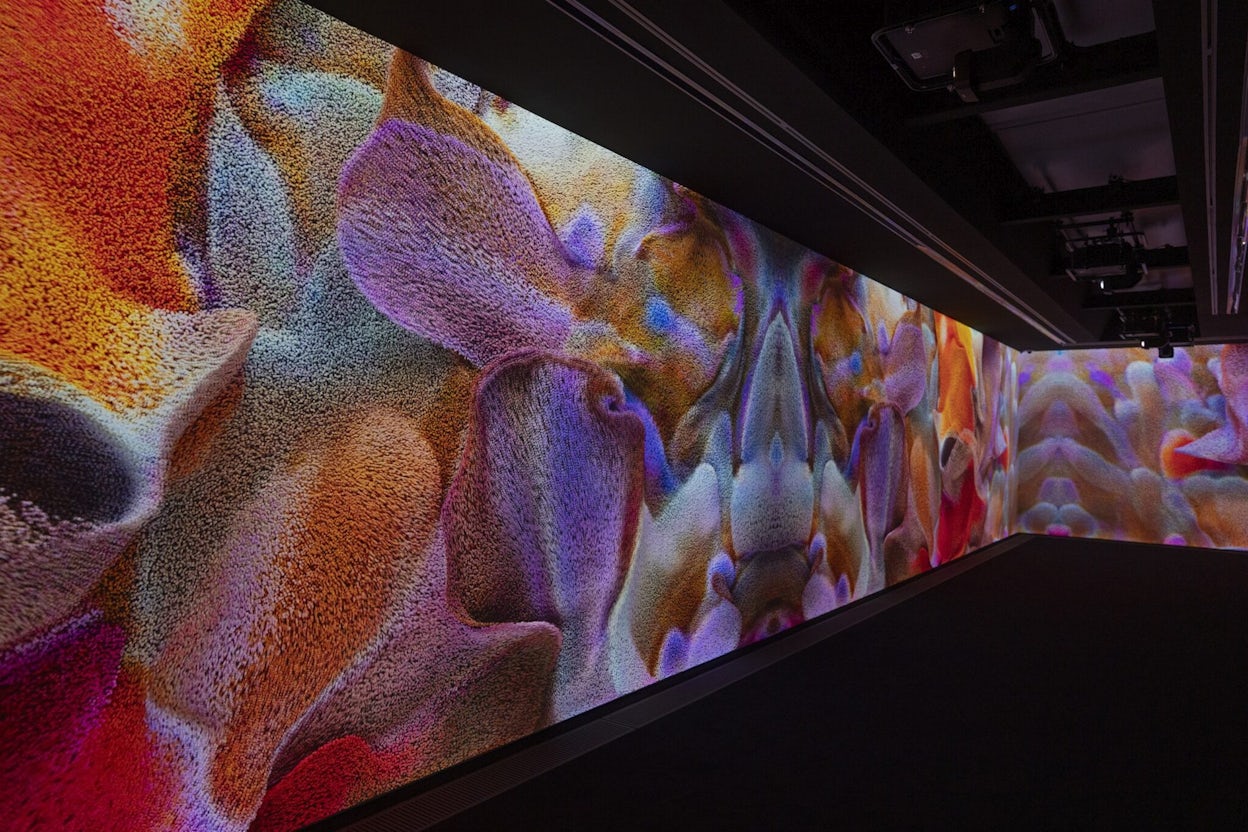
It’s AI time
There’s no secret that we’re living in the golden age of machine intelligence. The impact of artificial intelligence is already evident – both positive and negative – across almost all industries. In automotive, AI is driving the evolution of transport and is set to further revolutionise driver and passenger experiences. Polestar, for instance, has been exploring ideas around working with datasets to create artworks that can be displayed in the Spaces showrooms or within the car’s infotainment as a way of engaging dynamically with consumers.
While still in its conceptual stage, Polestar's Experience Design Manager Anya Ernest has been looking into the logistics of creating AI generative interactive pieces of artwork using user data from the cars. She sees these algorithmic artworks changing based on data – as in how many cars are currently driving, charging, reversing or idling. “The question is how these different datasets affect the artwork: what are the artistic expressions, and should the artwork need to carry a story.”
Ernest foresees great potential in a project like this. “If the artistic expression is graphical, as animations they can be projected in the Spaces, shown at an event, or perhaps become a virtual gallery available in the car’s infotainment to be enjoyed while charging the car.”


The creative industries are certainly waking up to AI’s potential. In advertising, film, and fashion, AI enables the creation of exotic sets and scenes that once took months to realise, now completed in a fraction of the time, often without the need for travel. For the arts, too, forging a relationship with technology can lead to finding a new visual language. Of course, all this is not new. Artists have forever flirted with new technology, and technology with artists. Today, however, artists face more pressing challenges as generative AI embarks on its own sweeping and rather unpredictable journey.
Hans Ulrich Obrist, the Swiss curator and artistic director of the Serpentine, has long championed all kinds of future-facing art. For over a decade, the London cultural institution has been deeply exploring the vast expanse of AI. Through its Serpentine Arts Technologies research body and the Creative AI Lab (a collaborative initiative with King’s College London), the Serpentine has been investigating the profound effects, both positive and negative, of new technology on the arts, the artists and the public.
Obrist believes that artists have the power not only to harness new technologies for positive impact but also to expose the “dark corridors of technology, the dangers,” he warns. He says artists have the power to make the invisible visible. “Refik Anadol, for instance, shows us that art can intermediate between culture, technology, society, ecology.”
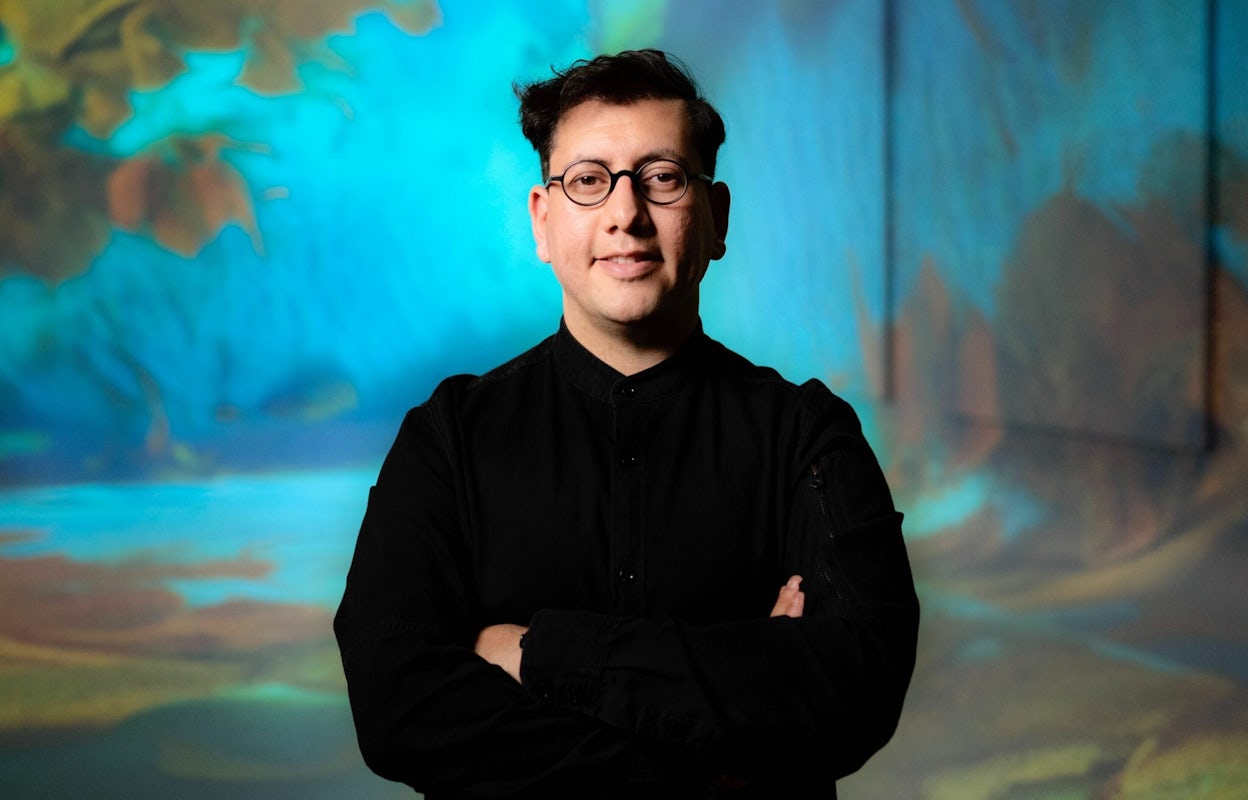
These are living artworks, there are some parameters but you have to invite the freedom of imagination
Nature calls
For Anadol nature is the key to unlocking the positive potential of AI. He argues that nature provides the most unbiased and pure data source. By harnessing data visualisation, AI can create sensory, immersive, and otherworldly artworks that encourage us to view the world through new lenses. These works aim to deepen our understanding of other species and foster a more inclusive coexistence with nature on our planet.
He believes part of this involves gaining data directly from nature, as he did with his latest artwork. “While AI can create new rainforests and beautiful worlds, what’s amazing is being within the data – being in nature, collecting data, living with the people. There is no tactile research if I only use the tools. When I lived in Amazonia, I touched the rainforest, heard jaguars, and lived with snakes, birds, and insects. This is my hope for AI’s future – that we learn to understand both stories.”
And at the core of Anadol’s work is the human director – the essential voice in the AI landscape, meticulously guiding every step of the AI evolution. “You have to fine tune the nobs, change the parameters. And it takes months and months and months. For me art in the age of machine intelligence means knowing the data, curating the data and training the AI. It is about chance and control. These are living artworks, there are some parameters but you have to invite the freedom of imagination.”
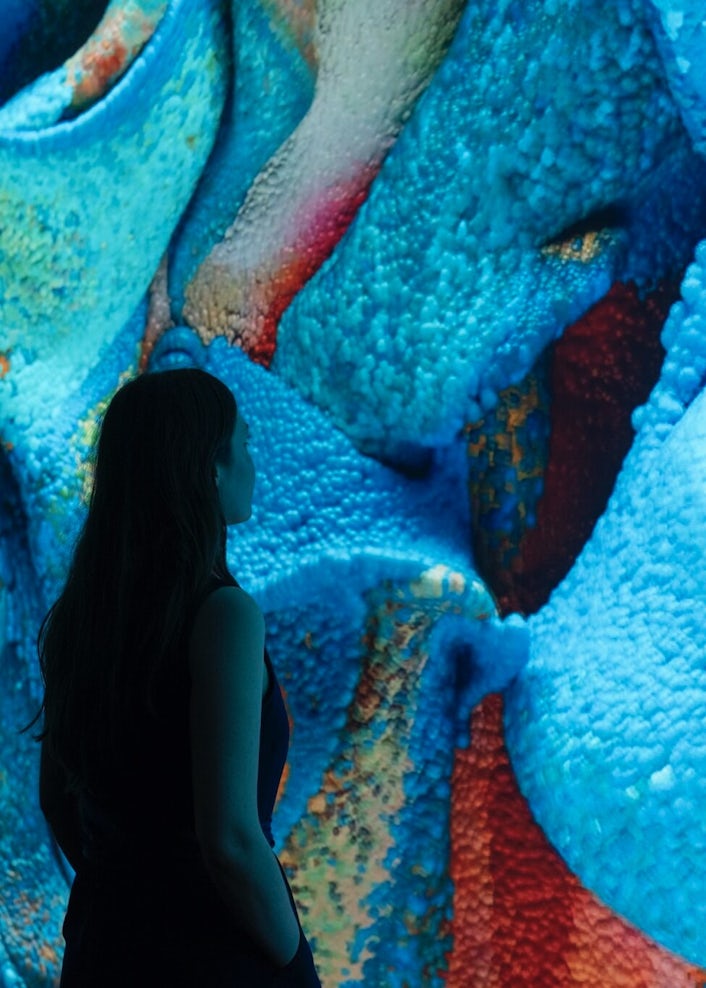
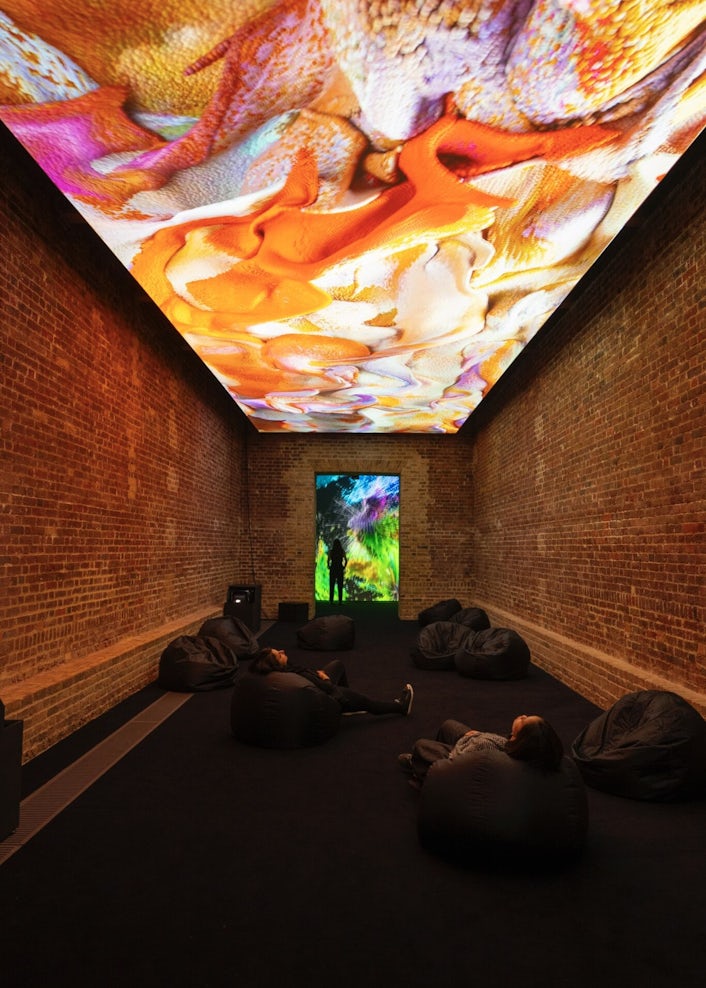
If [data is] used in the right way, it can be beautiful and kind, making us aware and engaged.
Anadol’s work has been likened to sci-fi-infused contemporary art, yet these artworks are deeply rooted in reality. And they are tremendously joyous. The artist says, “I’m not naïve; I see the problems and the limits. The technology is here, and we can use it to build a better world. But we have to be active and direct the technology.”
Obrist agrees that we can use technology for fostering attention to the natural world. “We need to look at how tech can create a spiritual connection with nature to make sure we are communicating with the environment rather than continue this colonial separation from nature, which is destroying the environment,” he says. “It’s about expanding the possibilities of how art can act as an intermediate between culture, technology and society, and how art can liberate us from becoming stuck in a quantified world – which is very dangerous.”
Ernest echoes this sentiment. “For a long time, we have been talking about data being the new oil, something dirty and deceptive, feeding capitalistic interest. But if it’s used in the right way, it can be beautiful and kind, making us aware and engaged.”
Words by: Nargess Banks








